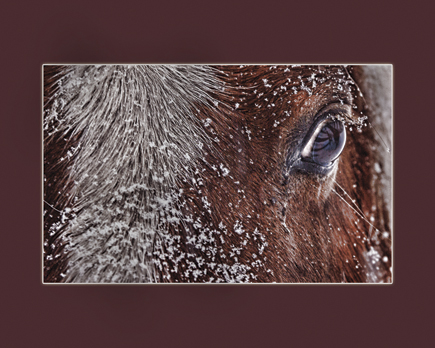Why I Need Pro Lenses; (And Why You May Or May Not Need Them Yourself)
“Most pro lenses have much sturdier construction than their consumer counterparts.”
I’m a pro photographer and have been for about 30 years. I mostly shoot portraits and a few weddings. I’m not one of those guys who will be first in line for the latest 15-800mm f/1.2 lens. As a matter of fact, I’m pretty much an equipment minimalist. But when I need a lens, I get a pro lens, even though I know it might cost me dearly. Why should I, when I know I can get a comparable focal length, non-pro lens for maybe a third of the price? Well, that’s what this article is all about.
First off, what are the differences between a consumer lens and a pro lens? Here’s a rundown of attributes that makes one different from the other:
 |
|
|
Aperture
Might as well start right out with the big one—as in bigger aperture. This alone is enough for me to get the pro lens. Is an f/2.8 lens going to cost you more than an f/4 lens of the same focal length? You bet. Known as “fast” lenses, the ones with the wider maximum apertures are more difficult to design.
Making a lens faster usually requires more elements, special glass, and tighter tolerances in manufacturing. And while we’re on the subject of lens speed, if it’s a zoom lens, and what isn’t nowadays, then I insist that my f/2.8 lens is at f/2.8 at both the low end, high end, and all through the zoom range. I simply don’t buy variable aperture lenses, and here’s why: I hand meter most of my work and if I change my focal length I don’t want to have to change my aperture. I am also shooting at wide-open or close to it most of the time in my work. My perspective is that of a portrait photographer, but what about the sports photographer who is following a subject and the f/stop is changing on him as he zooms? That variable aperture is a variable I don’t want to deal with.
 |
|
|
Build
Most pro lenses have much sturdier construction than their consumer counterparts. And I’ve got to believe that lens makers are willing to spend a little more time making sure the screws are all tight in a $1700 lens vs. a $300 lens. I’m not particularly careful with my lenses; most never see that case they came in again, so I want something I don’t have to treat like it’s made out of glass. Oh yeah, it is, that’s why I want it wrapped up very nicely in a sturdy enclosure.
Bokeh
The short definition of bokeh is that it defines what the out-of-focus highlights are going to look like when the lens is stopped down. The highlights take on the shape of the lens blades in the diaphragm. The more expensive lenses often have more blades, or rounded blades, to produce more pleasing bokeh. If the lens is used “wide-open” then no blades are involved and the lens will produce a very nice image with shallow depth of field and very pleasing bokeh, which is why pros like me shoot wide-open very often.
Focusing
Pro lenses often use special focusing motors that are faster and quieter than the motors in consumer lenses. Try photographing race cars going 175 mph and you’ll see the difference.
 |
|
|
Special Glass
While I touched on this earlier, higher-speed lenses usually require more expensive glass in more exotic shapes. These lenses have a higher refraction index that controls chromatic aberration or color fringing. And while we’re on that subject, let’s also consider lens coatings. All the manufacturers have their own names for their own coatings, but they are very important in reducing flare and ghosting and improving color rendition. Superior coatings, such as those found on pro lenses, are especially important because the more elements you have, the more surfaces you need to keep under control.
- Log in or register to post comments

















































